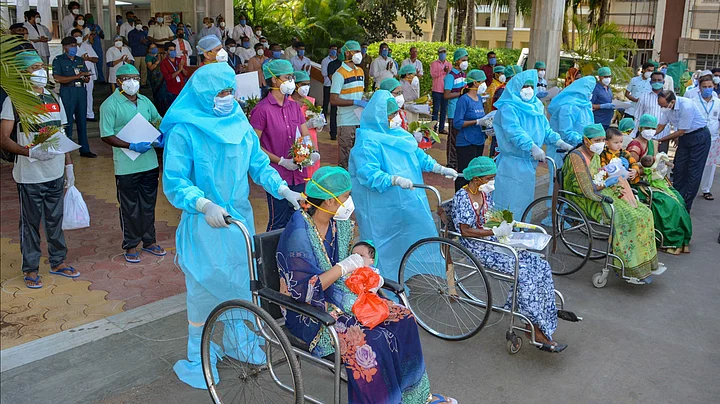You arrive for your shift at 8 am and don your bulky but required PPE kit. You are stationed at a COVID-19 ICU ward and there will be no drinking water or using the toilet for 8 hours.
There’s a flurry of activity, and you treat the symptoms of this never-before-seen respiratory virus and try to cater to patients who have the highest levels of oxygen deficiency first.
You see fellow healthcare workers around you making tough decisions, deciding on treatment modules in the midst of changing guidelines.
You spend the day on your feet and remember to scrub down and bathe as soon as you reach home - you worry about the numbers and the monsoons but hope things will peter down soon.
A typical day in a Mumbai hospital is filled with activity and stress. Maharashtra has cemented its place as the worst-hit Indian state, with 50231 active cases and 1635 deaths as of Monday, 25 May 2020.
What are the key issues plaguing Mumbai’s healthcare workers?
Body Bags, Beds, Ventilators and Manpower
Maharashtra is faced with new worries: active cases are rising steadily and the deadly monsoons are coming up. Do we have enough healthcare workers to deal with the surge? What about beds, ventilators and other equipment?
Post the disturbing video from Sion hospital that went viral, the issue of body bags as has come to the fore. Doctors at Sion, on the condition of anonymity, said that the case was unfortunate, but blaming the HCW or the hospital is unfair - instead, the need must be recognised and filled.
“In Sion Hospital, on average, 15 body bags in a day are needed currently for COVID or COVID-related deaths,” they added.
On average, their hospital sees 7-8 COVID deaths and 6-7 suspected COVID deaths where either the patient comes in dead or comes in with severe respiratory distress which is considered as suspected COVID.
A senior doctor at Bhabha hospital says that they also need around 6-8 body bags per day.
We are managing though through donors and hospitals arranging supplies ourselves.
At the start of the pandemic, the demand was for 1 or 2 per day, but it is “increasing a lot day by day.”
“We cannot risk our healthcare workers, there need to be specific leak-proof, secure body bags to carry the patient out.”
The doctors at Sion tell me the bags need to be leak-proof, at least 7 feet in height, 1 meter in width, they need a carrying handle, and they need to be able to handle 120 kgs of body weight.
Healthcare workers need to wear full PPE kits to transport the body to the crematorium or burial ground, and around 5-8 workers are involved for each patient.
Paras Anttim Maheshvwari of Paras Trading Corporation, a PPE manufacturer in Kolhapur says that while they specialise in manufacturing and supplying PPE kits, they also distribute (not manufacture) body bags specifically for COVID-19 patients. He adds that the demand for PPEs have dropped as “more players have entered the manufacturing field or the hospitals have stocked up.”
“We have 5000 body bags in stock at the moment,” says Paras.
Will the Monsoons Bring More Worries?
As with most things about this virus, unfortunately, no definite answer can be given.
Some doctors told me they believe the virus - like other viral infections - will die down in the monsoon, while others were worried the influx of monsoon-related diseases like malaria and dengue will exacerbate the system.
The doctor from Bhabha said that while the situation is already tense and he fears it will get worse,
Bhabha has a 400-bed strength but since the pandemic, the dedicated COVID wards can only manage 110 beds with isolation and separation.
These are full everyday - they try to discharge 6-7 patients through the day but this gets filled by the evening. A positive patient will occupy the bed for over 14 days.
They try to transfer asymptomatic cases to other hospitals, but cannot send the symptomatic ones anywhere. These are cases where the patient has pneumonia, respiratory illness, a high fever that refuses to calm down - according to the doctor, 60% of their cases are like this.
“We have three types of COVID care hospitals,” explains the doctor.
“We are already saturated and need more beds and manpower,” he adds.
It depends on hospital administration, and at most, hospitals can increase a few wards but this is to be seen on a case-by-case basis.
The proposed COVID center at Mumbai’s MMRDA grounds might bring some relief.
Even then, a doctor at Sion tells FIT that the need for ventilators is booming as oxygen is a severe requirement.
(At The Quint, we question everything. Play an active role in shaping our journalism by becoming a member today.)
